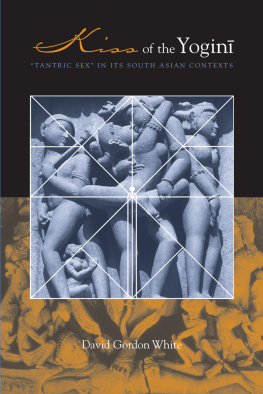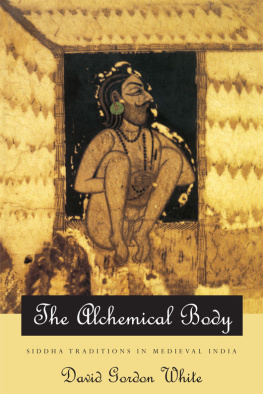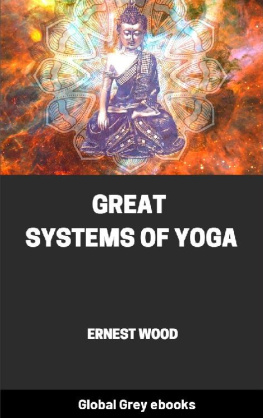

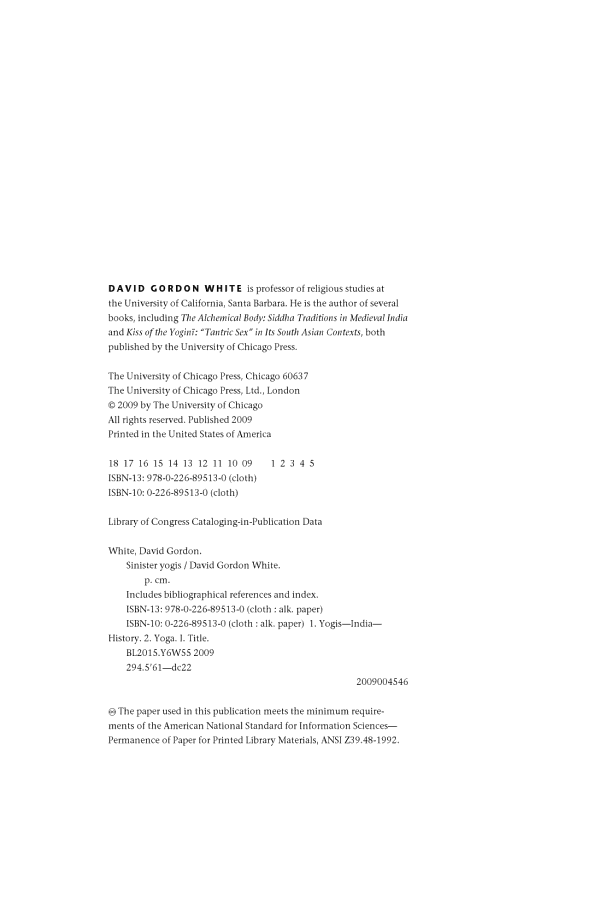
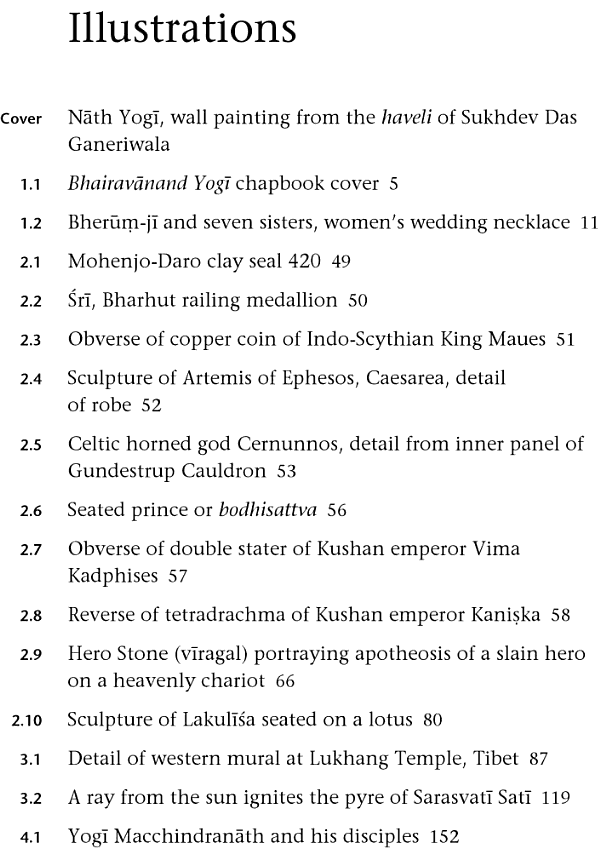
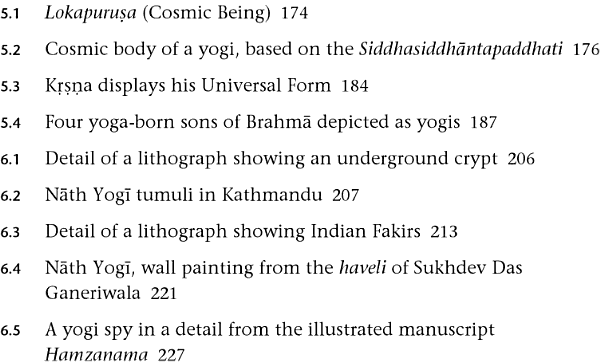
Preface
Like most of the buildings around it, the Trader Joes supermarket in West Hollywood is a low-slung pastel affair with a parking lot in the back. For a time during the winter and spring of 2007, the parking lot attendant there was an elegant beturbaned Sikh who seemed to be engaged in urgent conversations on his cell phone every time I shopped there. But one day, the Sikh was absent and another person wearing a turbansomeone far shorter and chubbier and with an unkempt beardwas standing in the lot. This person walked up to me as I was about to enter the market and said that he could tell by the lines on my forehead that I was a LUCKY MAN. The next thing he told me was that he was a YOGI, a fact that he documented by pulling a black-and-white photograph out of the five-by-seven inch leather satchel he carried in his hand. There in the photo I saw a younger version of the person before me, together with seven or eight possible disciples, sitting around a white-bearded guru in front of what appeared to be a Himalayan backdrop.
You are so lucky, you are going to become rich three times in September, he told me. He then proceeded to ask me a series of questions involving numbers (my birth date and those of my wife and daughter, etc.), noting my answers on a two-inch square of thin yellow paper. This went on for quite some time, until the paper was nearly covered with the blue ink of his crabbed notations. He then balled the piece of paper up and thrust it into my hand, telling me to hold it in my pocket. As I held it there, he asked me to pick a number between one and ten and tell him the first color that came to mind. Then he told me to take the balled-up piece of paper, which I had never let go of, out of my pocket. And what did I see written on it? NOT the dozens of numbers I had seen on it when he had given it to me to put in my pocket, but ONLY MY TWO FINAL ANSWERS and nothing else! He then asked me to give him some money, which I did, but of course what I gave him wasnt enough, so I said to him that if I got rich in September, Id come back and give him some more.
To this day, I dont know how he did his trick. But this encounter made me recall a prior meeting with someone who had also called himself a yogi (that person had used the vernacular form, jogi) and who had also done a trick for me and asked for money when he was done. His name was Bhandarinth, and I wrote about my meeting with him in the final pages of my 1996 book, The Alchemical Body: Siddha Traditions in Medieval India. When I look back on that meeting, which took place in Kathmandu in the spring of 1992, I am amazed by the symmetry of these two encounters. Bhandarinth, too, called himself a yogi. Bhandarinth, too, carried a satchel (albeit a larger one, big enough to hold a cobra). And Bhandarinth, too, performed a trick involving sleight of handin his case, changing a handful of sand into two small vermilion-coated mineral pelletsbefore asking for some money. As for me, I stiffed him in the same way I stiffed the Trader Joes yogi, telling him Id give him more money later.
But there were things that were different as well. When I met Bhandarinth, I was in my 30s and riding a bicycle, we were in the Himalayas, and Bhandarinth was thin. The Trader Joes yogi was chubby, he had come to Los Angeles from the Himalayas, and I was driving the sort of sporty motorized conveyance appropriate for persons having midlife crises. In Kathmandu, Bhandarinth and I spoke Hindi; in LA, the Trader Joes yogi and I spoke English. And the Trader Joes yogis trick was a lot better than Bhandarinths.
This got me thinking. In the photo that the Trader Joes yogi showed me, he was much thinner and looked to be about fifteen years younger than he did when I met him, and he was in the Himalayas. I had met Bhandarinth fifteen years earlier, in the Himalayas, and even though I was the same person as then, my looks had changed a lot too. So who was this guy from the Trader Joes parking lot who was calling himself a yogi? In the Alchemical Body, I ended the story of my meeting with Bhandarinth by speculating that the Nth Yogs on high had perhaps sent him to me to present me with the alchemical elixir (the two mineral pellets). Then I wrote, Our research continues, followed by three dots, and that was the end of the book. And, in fact, my research has continued in ways I could not have imagined over fifteen years ago.
But what I really would like to know is whether the yogi in the Trader Joes parking lot was Bhandarinth fifteen years later, or, if not, whether he was part of some cosmic plan in which I too had a minor role to play. I cannot help but think, now that I live in the city that is synonymous with the movie industry, of the David Lynch film Mulholland Drive, named for the winding road that runs not more than two miles above the very parking lot where I met the second yogi (or maybe the first yogi, for the second time). That moviewhich as far as I can understand it tells two widely divergent stories of the same person who has recently come to Los Angelesends with miniaturized versions of all of its characters running as if impelled by the invisible hand that had conjured up all of their life stories. Then there is a gunshot and the screen goes to black.
Both Bhandarinth and the guy I met in the Trader Joes parking lot called themselves yogis. But what was their yoga? There was no stretching or contorted poses, no deep breathing, no meditation or mantras. They both did tricks for me and then asked me for money.
It had not been my intention to write this book. I was well into a project on the history of South Asian polytheism when I came across a passage from a late portion of Indias (and the worlds) greatest epic, the Mahbhrata, that stopped me cold. Here is what that passage says:
Yogis who are without restraints [and] endowed with the power of yoga are [so many] masters, who enter into [the bodies of] the Prajpatis, the sages, the gods, and the great beings. Yama, the raging terminator (antaka), and death of terrible prowess: none of these masters the yogi who is possessed of immeasurable splendor... a yogi can lay hold of several thousand selves, and having obtained [their] power, he can walk the earth with all of them. he can obtain [for himself] the [realms of the] sense objects. otherwise, he can undertake terrible austerities, or, again, he can draw those [sense objects] back together [into himself], like the sun [does] its rays of light. Without a doubt, the powerful yogi who is a master of binding [others] is [also] possessed of the absolute power to release [others from those same bonds].1
When I first read that passage, sometime in the winter or spring of 2003, I realized that my research had to continue. I understand now that The Alchemical Body was but the first installment of a trilogy, the first -ptych of a triptych. In it, I had traced the likely alchemical origins of many of the concepts, structures, and processes of haha yoga. However, I remained dissatisfied with it, because I had been unable to find the sources for an underlying assumption of both the medieval alchemical and hathayogic traditions: to wit, that there were power substances in the world, which were the homologues of the divine semen and uterine blood of the great god iva and his consort, the great goddess (called Durg, Prvat, Dev, etc.), that were capable of transforming matter and energy in inexplicable ways. In the Hindu alchemical context, these power substances manifested as mercury and sulfur; in the hathayogic context, they were human semen and uterine blood. The research I subsequently undertook, to discover the system of knowledge within which the dynamic of these power substances was embedded, resulted in the book that I now realize was the second ptych of this triptych: Kiss of the Yogin: Tantric Sex in Its South Asian Contexts. A history of (mainly) Hindu Tantra, this book pushed the historical parameters of my research back from the tenth- to fifteenth-century time frame of The Alchemical Body to an earlier time, the first millennium of the common era.


